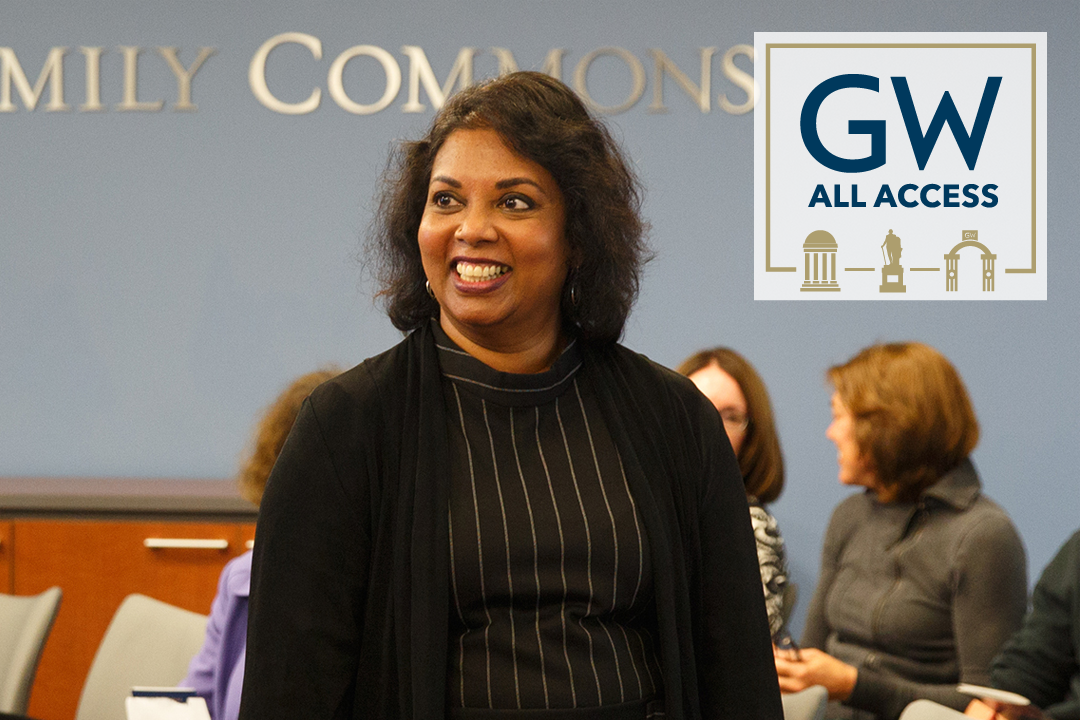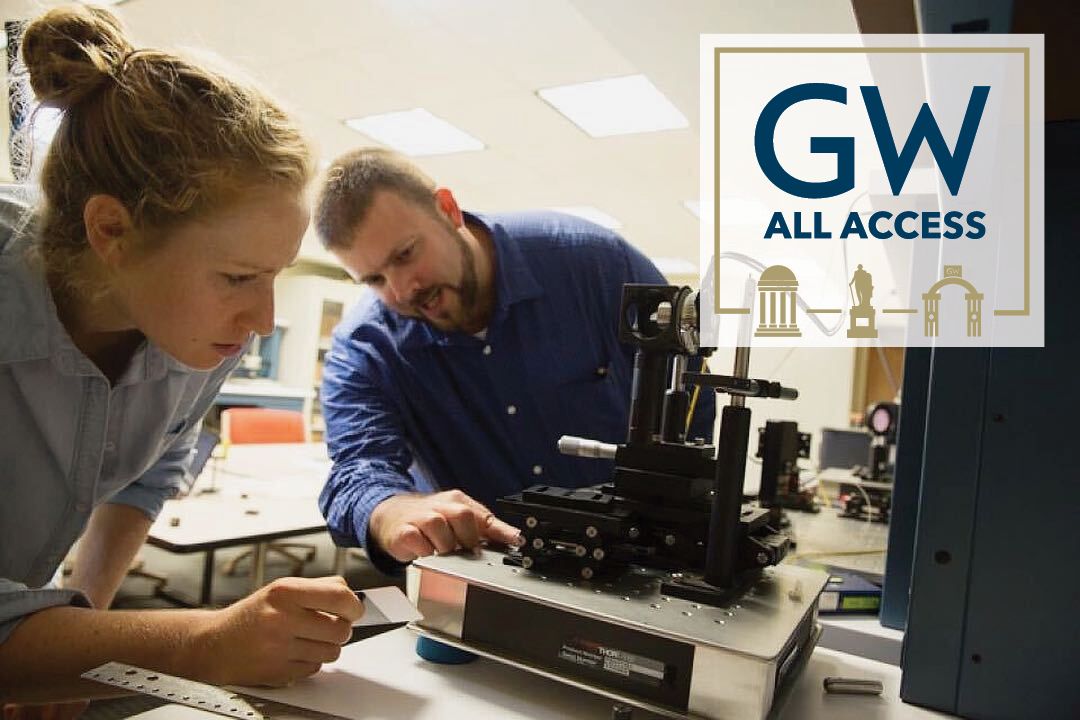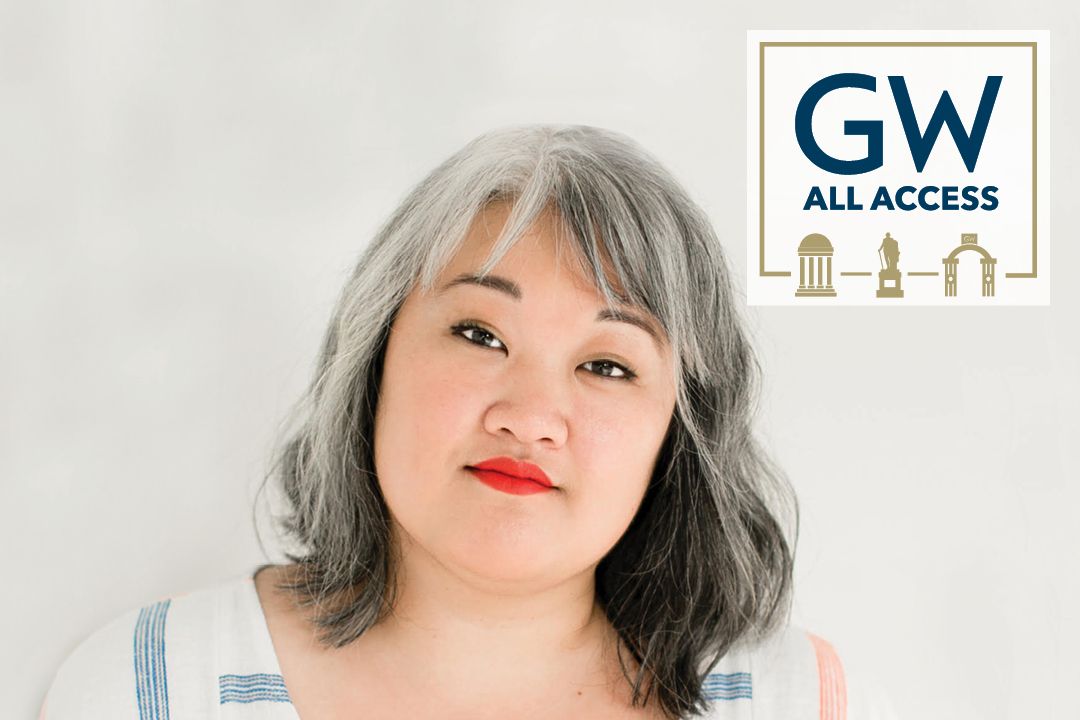By Ruth Steinhardt
Ask professor Irene Foster what she anticipates about teaching virtual classes at the George Washington University this fall, and she’ll give a startling but obviously sincere answer. She’s “so excited” by the challenge.
“In the spring, when we found out that we would be going virtual mid-semester, I was quite panicked and had to figure out quickly how to convert my classes from being in-person to remote,” said Dr. Foster, an associate professor of economics in the Columbian College of Arts & Sciences. “But by the end of the semester I came away wondering: ‘Why wasn’t I doing some of this before?' It made the class so much better.”
Like many of her colleagues, Dr. Foster found that going virtual was a way to reevaluate what she teaches and how she teaches it. And while she enjoys the flexibility and improvisational potential of a live class, she believes breaking each one down for remote learning has made her delivery tighter, more engaging and maybe even more interactive.
“When teaching remotely, you have to have a much clearer idea of what you want to communicate, how to communicate those important ideas effectively and how to measure if students are mastering those ideas,” she said. “It takes a lot more time and effort since it involves understanding the ‘right’ combination of pedagogy and technology that will achieve those goals.”
That’s particularly important this semester, when Dr. Foster’s students in her large, first-year student majority Principles of Mathematics for Economics and Principles of Macroeconomics classes will be learning in real time about the economic forces shaping their pandemic experience.
“I’m not even calling them lectures this semester—they’re ‘episodes’ in the drama of the economy,” Dr. Foster said.
GW All Access - Irene Foster from The George Washington University on Vimeo.
Dr. Foster will break each “episode” into a series of five-minute lecture chunks, so students can take breaks for synthesis instead of trying to absorb a relentless stream of information. Each lecture chunk will include PowerPoint slides with gaps for math or graphs that students can fill in, live, to ensure they’re grasping the concepts.
Like her students, Dr. Foster does struggle with the absence of her in-person class community. She and her graduate teaching assistants (GTAs) can no longer hold their daily open office hours in Gelman Library, and she can’t arrive in the classroom early—as she loves to do—to chat with her students face-to-face before class.
“What I love about teaching is students and the energy in the classroom,” she said. “I usually go to class early just to spend some time meeting students, learning where they’re from, what they're interested in and what they're dreaming about. So, for me, teaching into a black hole is a really hard idea.”
But that’s why she’s determined to reinvent her classroom outside of its physical limitations.
“I am planning to ‘go’ to my remote class about 15 minutes early just to meet with students, and when my students are in my synchronous class with me, I’m going to make it as interactive as possible,” she said. “I’m teaching a 75-minute class, and I’ve planned out every minute of it thanks to ideas borrowed from my GW colleagues.”
Weeks before classes begin, Dr. Foster can already spell out each of those minutes. In the first 10 minutes, students will discuss concepts they struggled with the previous week and analyze why they were hard to grasp. Dr. Foster will then introduce the day’s “hook,” a controversial topic from the news or a case study that illustrates an economic principle.
After she’s told the story, she’ll poll the class on a related question: Without knowing more about the topic or the principles at play, what’s your gut feeling about this? Did the company make the right decision or the wrong one? Did this analyst’s conclusion accurately reflect the facts?
After the poll will come the chunked lecture, structured to begin with the easiest concepts and end with the hardest ones. In between, Dr. Foster will keep students engaged using quick-fire questions they can answer with a click. When the lecture material is over, students will break into virtual groups managed by GTAs to complete an online problem set of two or three questions.
When students return to the main online room, Dr. Foster will remind them of the “hook” question she asked at the beginning of class, re-poll them with their new knowledge and show them the difference in the results of the two polls.
“It’s a great device because students realize that in just 25 minutes they’ve learned something they didn’t know before class,” Dr. Foster said. “It’s very satisfying for me and empowering for students.”
The final five minutes of class is an “exit poll,” in which students can ask questions about topics that still elude them. These will be addressed in the next class session or GTA-led discussion section. Dr. Foster and her GTAs also are planning extensive office hours to ensure they are available to meet with students in any time zone.
“It might mean that I have to stay up once in a while to meet with students who are on the other side of the world,” Dr. Foster said. “And I will.”
In the end, Dr. Foster said, she’s just looking forward to connecting with her students again in whatever form that connection takes.
“This is a hard time and economics is a hard subject,” she said. “What I do outside of the classroom is sometimes much more important than what I do in the classroom. We have to be prepared to give students the time, attention and help they need to succeed. I’m learning and adapting so I can do it, and do it well.”




